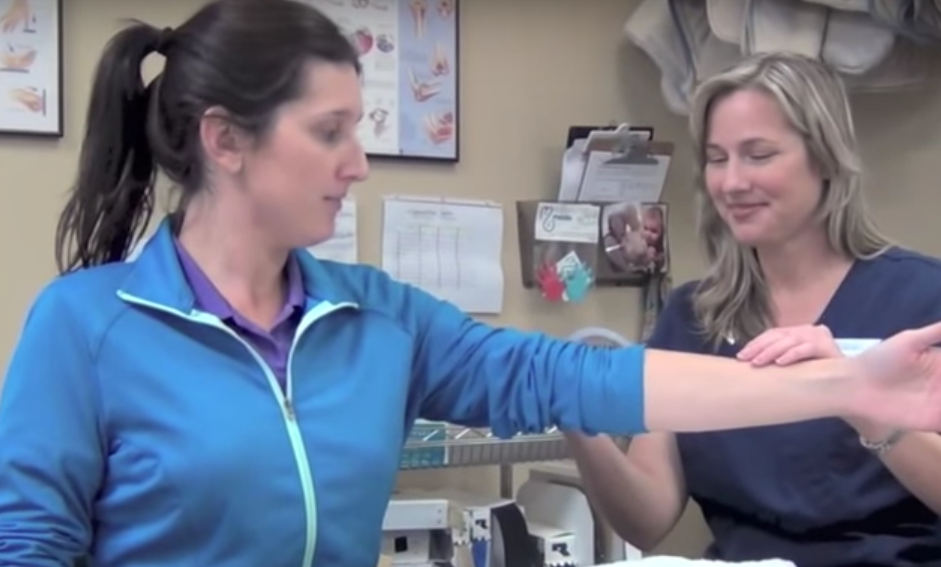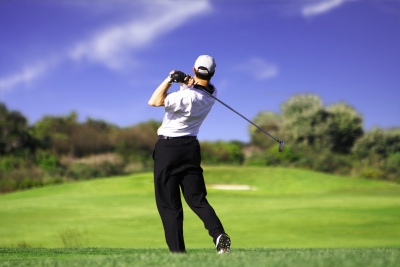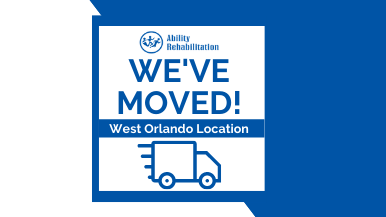Tennis and Golfer’s Elbow
 Tennis elbow, known as lateral epicondylitis, is one of the most common soft tissue ailments of the arm and affects 1 to 3 percent of American adults. Golfer’s elbow, known as medial epicondylitis, impacts the inner part of the elbow and is about one-fifth as prevalent as tennis elbow.
Tennis elbow, known as lateral epicondylitis, is one of the most common soft tissue ailments of the arm and affects 1 to 3 percent of American adults. Golfer’s elbow, known as medial epicondylitis, impacts the inner part of the elbow and is about one-fifth as prevalent as tennis elbow.
Both tennis and golfer’s elbow result from repetitive, overuse motions of the arm and wrist, causing inflammation to the tendons that attach to the elbow. The primary difference between the two ailments is the location of the swelling.
Epicondylitis is the medical term for the area around the epicondyle, the bony protrusions that can be felt on both sides of the elbow. Epicondylitis generates pain and loss of function in the arm; it is responsible for a decrease in productivity and economic losses due to workdays lost and the inability to properly do one’s job.
What is Tennis Elbow?
The forearm muscle mainly responsible for securing the wrist when the hand is locked in a power grip (like in a typical tennis swing) is called the extensor carpi radialis brevis (ECRB). The ECRB runs along the outer side of the forearm where tendons attach to the lateral epicondyle of the elbow (the outer elbow bone).
When the muscles of the forearm become pained, swollen, and strained from repeated, exertive motions over time, tiny tears can appear on the tendons that join onto the lateral epicondyle, resulting in significant discomfort and sensitivity on the outer edge of the elbow.
Tennis elbow is not only reserved for tennis players. Regular trade workers who engage in repetitive, strenuous movements are at risk including painters, construction workers, cooks, and carpenters. Tennis elbow is mostly seen among those aged 30 to 50-years-old.
Tennis Elbow Symptoms
 The symptoms of tennis elbow usually build up gradually over time and not as a result of any one particular action or injury. Initially, moderate pain may echo from the outside of the elbow toward the forearm and wrist. As granulated tissue builds up around the lateral epicondyle, the added friction can cause increased swelling, tenderness, and continue to worsen over the course of weeks or months. The discomfort may be felt at all times or only when engaging in certain activities involving grasping, squeezing, or lifting.
The symptoms of tennis elbow usually build up gradually over time and not as a result of any one particular action or injury. Initially, moderate pain may echo from the outside of the elbow toward the forearm and wrist. As granulated tissue builds up around the lateral epicondyle, the added friction can cause increased swelling, tenderness, and continue to worsen over the course of weeks or months. The discomfort may be felt at all times or only when engaging in certain activities involving grasping, squeezing, or lifting.
Some common symptoms associated with tennis elbow include:
- Stinging, aching pain on the outer elbow
- Inflammation
- A weakened grip when using tools or a racquet
- Pain when opening a door
- Tenderness when shaking hands
- Difficulty raising the hand or straightening the wrist
What is Golfer’s Elbow?
 Medial epicondylitis is an irritation on the inner side of the arm and elbow that generally comes about through motions involving repeated twisting or downward flexion of the wrist. Golfer’s elbow impacts the tendons that run along the inside of the elbow, which join the muscles that bend the wrist and close the fingers during gripping motions.
Medial epicondylitis is an irritation on the inner side of the arm and elbow that generally comes about through motions involving repeated twisting or downward flexion of the wrist. Golfer’s elbow impacts the tendons that run along the inside of the elbow, which join the muscles that bend the wrist and close the fingers during gripping motions.
Repetitive movements during activities such as gardening, shoveling, throwing, and swinging a club or a racquet can trigger golfer’s elbow, as can lifting motions where the elbow is straight and the palm of the hand facing downward such as weightlifting or painting.
Golfer’s Elbow Symptoms
Symptoms of golfer’s elbow are akin to tennis elbow; however, they manifest on the inner side of the arm. They may include:
- Pain on the inside of the elbow that can extend down the arm
- Elbow stiffness
- Weakness in the hands or wrists
- Numb or tingly feeling in the ring and little fingers
- Pain when gripping or twisting objects
- Pain when flexing the wrist or making a fist
As with tennis elbow, symptoms typically begin gradually and can worsen over time with the continuation of strained and repetitive motions.
Treatment for Tennis Elbow and Golfer’s Elbow
Rest is usually recommended as the first line of treatment; patients may need up to several weeks of rest to see their symptoms diminish, and perhaps months for them to disappear altogether. Icing can be used to ease pain and inflammation and may be complemented by the use of anti-inflammatory pain relievers.
If pain does not subside, consider seeing a physical therapist or orthopeadic specialist for further treatment. A brace, wrist splint, or athletic tape can help to reduce pain and allow the strained muscles and tendons to rest.
Other treatments may include:
- Increased or supervised stretching exercises/physical therapy
- Stem cell and platelet rich plasma therapy
- Steroid injections
- Surgery



